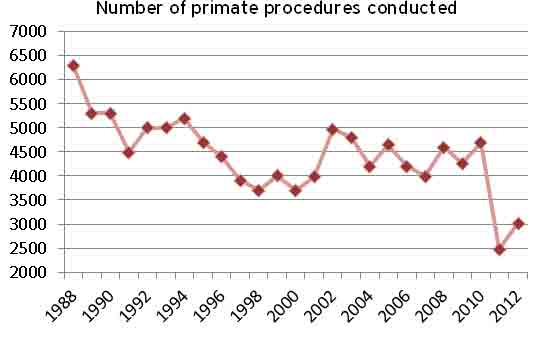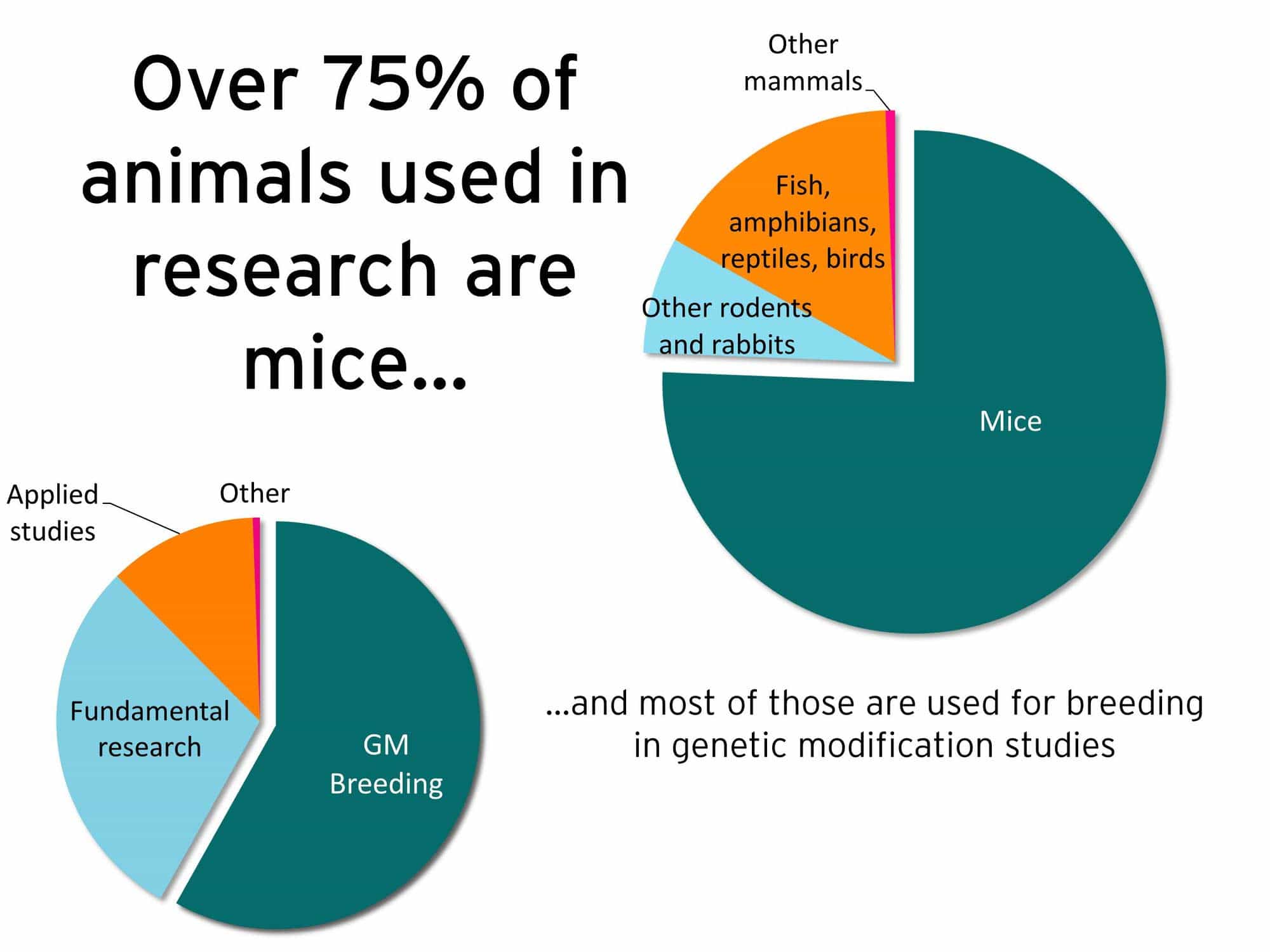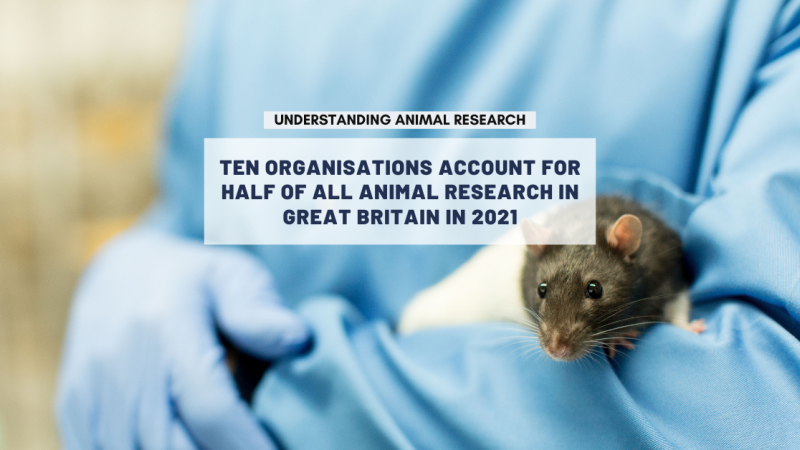
The Home Office has just released the animal research statistics for 2012. They present information about animal research in the UK such as the number of ‘procedures’ performed, what they were for, and who was doing them.
The results show the number of procedures conducted increased by 8% to a total of 4.11 million. This was been largely driven by a 22% increase in the breeding of genetically modified animals, primarily mice. Excluding these, the number of procedures involving normal animals decreased by 2%.
Below are some of the numbers, including the changes from the previous year. Note that the figures relate to the number of procedures; the total number of animals is slightly less as some animals may be involved in more than one procedure.

There were no tests carried out for cosmetic products and there were no experiments carried out on great apes (gorillas, orang-utans or chimpanzees) in line with the UK bans on such testing. There were no animals used to test household products.
Dogs, cats and primates together account for less than 0.2% of procedures (1.4% by the number of animals) however there was a rise in the number of procedures in both primates and dogs. Primate procedures rose 22% compared to last year; however, this is partly due to a large drop in primate procedures in 2011 and the figure remains 36% lower than in 2010 (see graph below). Overall, there has been a general decline in the number of primates used since 1988, from over 6,000 down to 3,020. Primates remain important to research into neurodegenerative conditions, such as Parkinson’s disease, which are becoming increasingly prevalent in ageing developed countries. They are also used to test the safety and efficacy of new biological treatments, such as drugs to treat cancer and auto-immune diseases.

While the number of normal animals has fallen in 2012, the rise in the number of procedures is due to a large rise in the number of genetically modified animals used. Genetically modified mice are an increasingly important tool in understanding the role of different genes in the body, as well as allowing scientists to create better disease models which more accurately reflect the human condition. Recently, genetically modified mice with a mutation in the BRCA1 gene, which is found in women predisposed to breast cancer, have been used to refine the therapies used to treat women with the condition and minimise drug resistance.
The rise in procedures also masks fantastic work carried out by the NC3Rs and individual institutions to Refine, Replace and Reduce animals in research. New technologies, such as organs-on-a-chip may allow scientists to replace some areas of research which previously involved animals, and many more non-animal methods continue to be developed and used.
Our image library has more infographics putting animal research, particularly using GM mice, into context:
Number of animals used for research in the UK in 2012
Why do we want to study mouse genetics?
Genetic modifications in mice allow us to better understand human diseases
How does the number of animals used in research compare to those used for food?

Note to press
For comment please contact Chris Magee (tel 020 3675 1234).
Graphics and images that can be used to illustrate articles about the Home Office announcement are available from our resource library here.
Last edited: 16 August 2022 09:58



